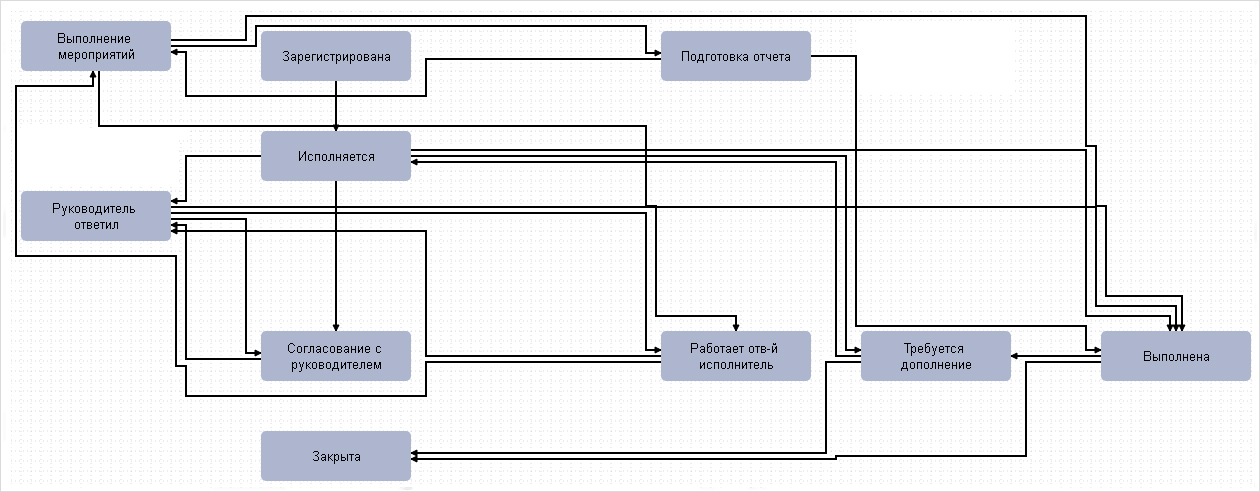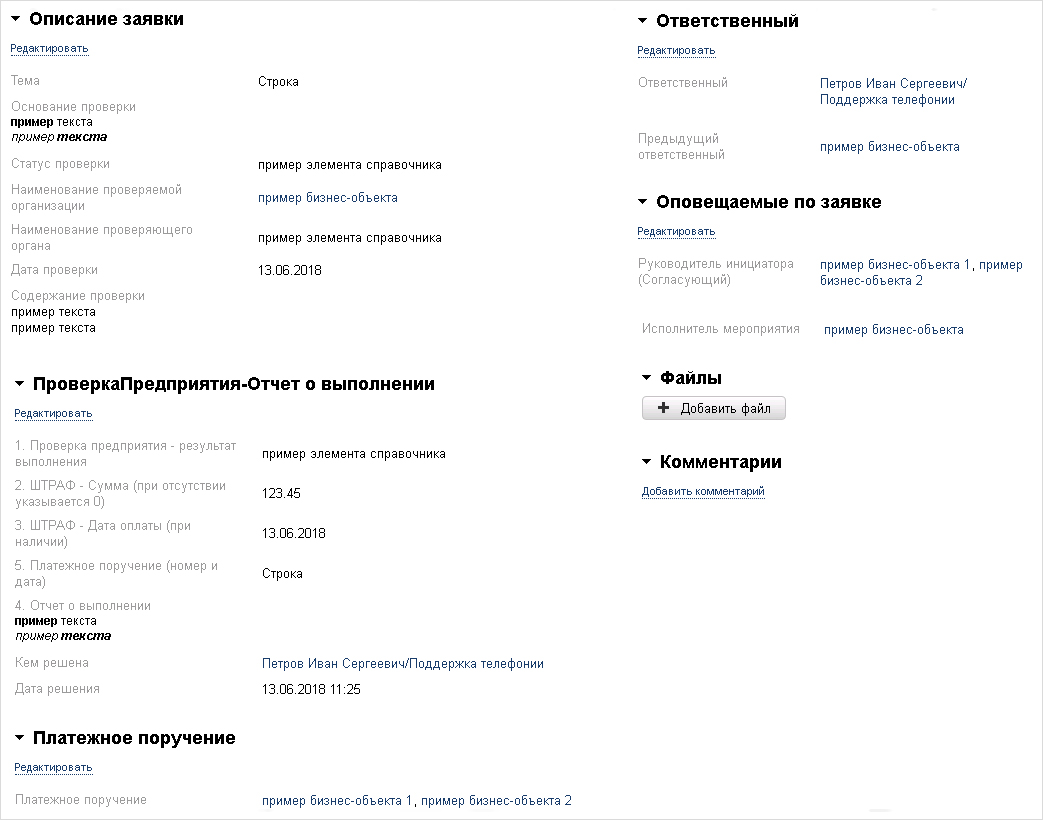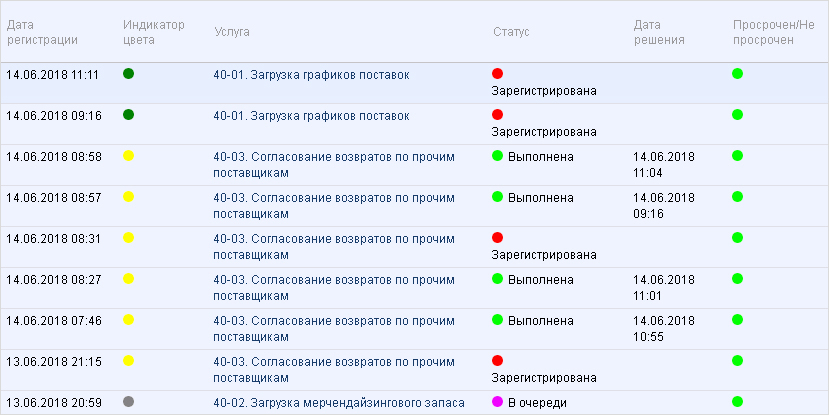ITSM-manager for happiness: how the profession of the future helps to expand the boundaries of desk services
“What kind of nonsense? Are there happiness managers? ”The pessimist asks after reading the title of the article. “But the idea is quite real! In the UAE, the real Minister of Happiness has been working for a long time! ”The optimist retorts.
And where does information technology? First things first. At the beginning of this year, a well-known Russian IT company offered to participate in a series of thematic events on the application of the principles of a non-IT service approach as an expert. The overall goal of the events is to share experience on how to organize effective interaction between the company's service departments and business, using the methods and tools of the service approach. My task was to show with real examples what to do and how to achieve the result.
I have been actively engaged in the issues of business process optimization using the service approach for the last 10 years. And it is always interesting for me to communicate with colleagues on this topic.
Based on the results of these events and taking into account the latest trends in the IT world, I decided to speculate in an article about how, during global digital transformations, which the first people on the big screens are talking about, not just being an IT person, but becoming an IT professional for happiness .
Part one. What happens in IT?
It is no secret that in the near future many professions will cease to be in demand. This also applies to IT. There are questions:
- What will be claimed?
- How not to get lost in this new reality?
- What professional field will develop?
Recently came across a column in the magazine about the professions of the future. I will cite a brief excerpt: “A lot comes down to a strange and seemingly non-economic, if not naive, concept of happiness. Happiness as satisfaction with the present day and faith in tomorrow. Happiness as a safety factor. Happiness as mental and physical comfort. Happiness as a commodity. Happiness as an object of sales. It exists now, just not fully formulated. They call names: Steve Jobs, Elon Musk, Richard Branson. Sometimes they say: designer. Or: a marketer. But more and more often they agree that “a specialist in happiness” is a profession. One of the sought-after professions of the future. ”
Do not agree? But after all the happiness factor can be “sewn up” in the most various things. Including in the field of IT. For example, in process optimization using knowledge and IT tools.
At the ITMF-2018 forum in May, one of the speakers, Andrei Zavarzin, director of the Mass Personalization Division of Sberbank, said: . And quite unexpectedly, ITSM and Devops are not only engineering practices, but also effective approaches to managing non-IT business processes . Let's talk about yesterday's IT career business and expanding the application of process models and IT practices to the entire business . ”
It was not by chance that I highlighted two points here:
- ITSM is an effective approach to managing non-IT business processes.
- Business career yesterday IT shnik.
At the first moment. I have already talked about examples of managing non-IT processes . Today it has long been not only the administrative department and services of various repairs. Service desk tools are successfully used in the personnel department, financial services, manufacturing, transportation, security, lawyers and in many other departments.
It works. This is a real factor of happiness, both for process owners and users. It gives an economic effect for business.
For the second point. It is not necessary to become "yesterday's IT Schnick." You can, while remaining "today", become a business partner. No one says that you will immediately become "the Minister of Fortunately." But you will take the first steps towards this. Your weight in the eyes of the business will grow. The activities of your unit will not be viewed as “permanently unprofitable IT”, but as a unit that helps business. There is already real and wage increases and career growth, and other "buns".
So what actually happens? Changes occur. Those who have not yet noticed this, risk being out of work. Who is still engaged only in the "maintenance of iron and software maintenance," tomorrow will not be interesting in the market.
Part two. Who made happy
I will share real examples from recent IT projects. I'll tell you about some of the "dishes" cooked with my own hands. In fact, they are much more. And, of course, more of those for whom IT professionals have already become managers of happiness.
Often, processes that are solved before the project is started via e-mail are automated using the tool service class desc . Automated successfully and with positive customer reviews. Here are the last ones: “ Dmitry, if in our company we were given medals, I would give the first order to you .” Just such a phrase a few days ago I was greeted by the head of a major project in our company. “ For what? - I was completely sincerely surprised. “ For your service desk. You have no idea how he is helping us now . ”
In fact, we replaced e-mail with an automated process for managing calls in the existing system of service class desk. They did it quickly, efficiently and at no extra cost. Made a really handy tool.
One more thing. About the truth. Remember, the hero of Sergei Bodrov uttered the phrase: “I think that strength is in truth. Whose truth is the stronger. ”
What truth, in terms of helping businesses, are we talking about? About the one about which they are silent. So, they make their company weaker. The truth is that:
- there are processes that can and should be automated;
- a manager is not always ready to discuss this for various reasons;
- the owner (shareholder) does not know about this because this information does not reach him.
As a result, the business does not work in full force. Bears loss of resources and speed in basic, routine operations.
I will share examples of successful cases.
Case 1. The process of preparation for the inspection of enterprises by supervisory and regulatory authorities
No matter what kind of business you have or what size your company is, everyone has checks. And the consequences, in case of unavailability, feel everything. Therefore, it is important to be prepared for such checks to minimize possible risks. The fact is that the owners begin to think about it only by analyzing the costs of paying fines based on the results of inspections. There are questions. Why? Who is guilty? What to do?
No replies. The process was not conducted anywhere. From the mail you can not get everything. It is clear that it is necessary to automate somehow. Appeal to IT. Waiting for a miracle from them. Fast, cheap and high quality. And if this is possible, you become a specialist in happiness for your customer. You really exempt him from routine work.
At the start of the project:
- information about inspections came from various sources: mail, Internet, telephone, in person;
- there was no person responsible for preparing for the inspection;
- there was no control over the implementation of the instructions of the regulatory authorities;
- there was no single window with consolidated verification data;
- there was no reporting on checks.
The objective of the project : to minimize the risks of imposing fines due to non-compliance with the requirements of supervisory and regulatory authorities.
Automation targets:
- To increase the control of the enterprise’s readiness for planned and unscheduled inspections of supervisory and control authorities.
- Increase control over compliance with the regulations of supervisory and regulatory authorities.
- Identify the main reasons for non-compliance with the requirements of supervisory and regulatory authorities.
- Minimize the risk of imposing fines on the company due to non-compliance with the requirements of supervisory and regulatory authorities.
Together with IT specialists, an analysis was conducted of the possibilities of using the existing service desk system to automate this process.

Functional process diagram
Within a month, the process was prepared for testing in the system.

Application Life Cycle Chart

Registered Application Card
')
After a week of testing, the process was launched in a productive environment. Published the necessary orders for changes. Designed regulations. Users and performers provided instructions. During the first two months of work in the system, despite the initial dissatisfaction of some employees, positive results were obtained. From confusion and chaos went to order and reliable obtaining real information. There is a clear trend towards achieving goals.
The customer is delighted. Business is satisfied. IT announced thanks. A small but necessary happiness for everyone.
Case 2. Management of retail stores appeals
There are many different processes in retail that need to be optimized. I worked in large companies Wimm-Bill-Dann, Victoria, Dixie. Now I can definitely say that our teams did not just optimize the processes. We helped to work more efficiently. We were thanked. We gave a little happiness. I'll tell you about one of the solutions.
The retailer company has successfully used a convenient and easily scalable service desk system for more than three years. Including for some retail processes.
Business asked to automate the process of appealing stores in the department of product distribution.
Automation targets:
- Take into account the circulation of stores.
- In a timely manner to resolve received appeals.
- Monitor performance indicators for applications.
Together with the system technologist, the technical task was developed. It is important that this was done without any bureaucratic obstacles that we often render to our internal customers. Just walked through the process together, defined a list of new items in the menu, agreed on the life cycle of the application. The work took about two to three days
The implementation of changes in the test database, testing and transfer to the product was completed within a month.

List of registered hits

Analytics accounting services

Analysis of the accounting of appeals by status
Call management has become much more efficient. Their timely decision is monitored. Overdue applications are being reviewed and conclusions are made.
The customer wrote us a letter: “ After we began to use the desk service in this process, the speed of processing requests immediately increased. There was a single database with centralized information about applications. Established control over the execution. Gone are the risks of violation of the scheduled processing time and loss of applications. It became much easier for shops to work . ”
Just like that, we made a little bit happier than our colleagues.
Part Three What to do
A familiar IT auditor, a specialist with extensive experience, once said: “ Pay special attention that when a process is formalized with the help of a service desk, the risks inside the process are significantly reduced. The risk of failure to achieve the objectives of the process, the risk of process inefficiency, the risk of failure, failure during the process. But often for IT managers it’s not clear and not necessary. For management, especially higher, it is always interesting and relevant. Since its main task is to achieve goals and at the same time minimize risks . ”
What does the transfer process in the service desk? First of all, optimization and risk reduction.
| Optimization | Risk reduction |
| time saving | ensuring repeatability of the performer |
| staff reduction | availability of control at all stages |
| the possibility of continuous process improvement through measurement and monitoring | guaranteed quality level of the result |
Practically after each performance, the participants came up with the phrase: “ A very interesting practical presentation. When tomorrow I will come to work, what exactly to do? How to convey to the business these ideas? ".
The general scheme, at first glance, is the same. Only have to implement it individually. The main thing is to adhere to three principles.
Principle 1. Invite experts
Not everyone should try to do it yourself. It only seems that you can do everything yourself. You can, of course. And a lot. The thing is different.
First, you will face a shortage of time. Then with a shortage of personnel. And then the desire will pass. And business will not wait. Road spoon for dinner.
Therefore, it is so important to determine the border: when it is possible and necessary to do it on your own, and when it is more effective to invite specialists. In any case, you decide directly on the spot.
Principle 2. Achieve participation in the project of decision makers (DM)
It is not a secret how important the support of the “those in power” in any project is: in the future it is “cronyism”, the budget and, if necessary, protection. The decision makers will convince businesses of the need for the requested changes and will be interested in the speedy implementation of the new functionality.
According to the experience of recent projects, all the proposals supported by the decision maker, successfully implemented. Automating processes without decision makers directly interested in the result is an ungrateful task. And not the fact that generally necessary.
Principle 3. Remember that cheese is not free.
In the market there are many free solutions of the service desk class, different and really working. He himself participated in their configuration and use.
But setting up free software is also a cost. At least your working time. And that means money. In this case, it is unlikely that something will be described and documented. When leaving the company resource responsible for setting up the system, be sure to have problems with its maintenance.
Risks, risks, risks ... Who evaluates them? You promise business results quickly and at no cost. Business is hoping. And what do we get in reality? Of course, there are examples of successful implementation of free software. But this is the exception rather than the established practice.
I do not agitate to buy systems for millions. Moreover, the main price in them is consulting. You can purchase a solution in a box or in the cloud, fairly inexpensively, and then set it up. As a rule, in such systems there is a set of ready-made puzzles, from which the process can be assembled on the basis of the available instructions and without programming. Or order customization for specific cases, which will also be cheaper. The main advantage of this solution is the support of the systems by the developer, reliability, great opportunities for making changes.
So what exactly do? To begin to understand: do you need it at all? Maybe in your company and without automation of the routine everything is fine. But if not, then act. Become a specialist in happiness. Take your chance. After all, you have everything you need for this.
To conclusions
While he was preparing the article, the business has already asked to help automate the current processes three times with the help of the service desk program. Although it has long been not just a service desk. This is a universal platform for automating business processes.
Using this tool in our work, helping a business to achieve its goals, we really became ITSM-managers for happiness. We have letters of thanks from customers. There are specific economic indicators for optimization. There is happiness from the results.
Join now! Learn the profession of the future!
What to read on:
The obvious benefit: how and why to use the service approach beyond IT:
Part 1 , Part 2 , Part 3
Source: https://habr.com/ru/post/417309/
All Articles